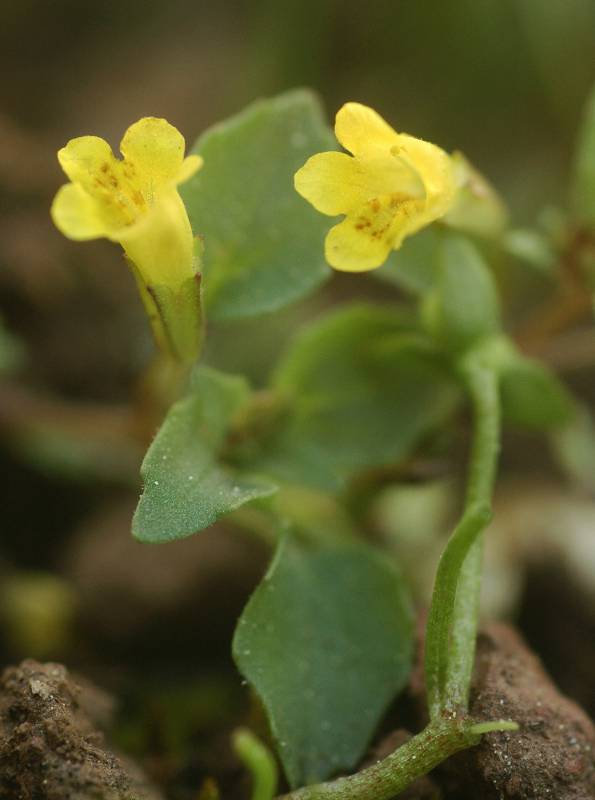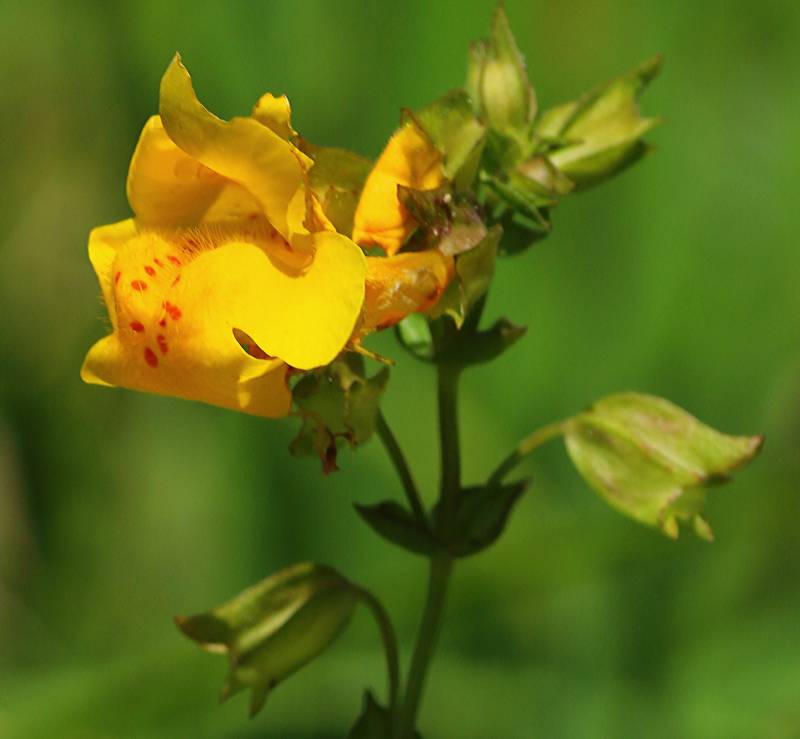Erythranthe patula
Erythranthe scouleri
stalk-leaved monkey-flower
Scouler's monkey-flower
Leaves cauline, basal ones not persistent;
petioles 8-25 mm;
blade deltate or somewhat ovate to lanceolate, approximately 4-12 mm long and 3-10 mm broad, palmate venation with 3 veins, base rounded to cuneate-truncate, margins usually finely toothed, apex acute to obtuse, surfaces glabrous as stems.
Leaves cauline, basal ones not typically persistent;
petioles 10-25 mm and gradually merging into blade, becoming sessile distally;
blade oblong-elliptic to oblong lanceolate, 25-60 mm long and 8-18 mm broad, palmate venation with 5-7 veins to nearly pinnate, base attenuate, margins evenly and shallowly toothed or scalloped with 10-20 teeth per side, apex acute to obtuse, surfaces glabrous.
Axillary flowers 1-10, emerging from nodes throughout; fruiting pedicels 10-25 mm, glandular as stems;
calyx tubular, barely or not inflated, 5-6 mm, margins with distinct teeth or lobes, slightly stipitate-glandular to sparsely hirtellous, lobes pronounced, erect;
corollas yellow, lower limb commonly with some red or brownish dots, symmetric radially or bilaterally, regular or weakly bilabiate;
tube-throat funnel-shaped, 7-8 mm, protruding beyond calyx margin;
lobes oblong, apex rounded to truncate;
styles glabrous;
anthers not protruding, glabrous.
Axillary flowers 2-8, emerging distalmost nodes; fruiting pedicels 20-25 mm, glabrous;
calyx ovoid, inflated, compressed across sagittal plane, 13-14 mm, glabrous, throat closing;
corollas yellow with few or no reddish markings, symmetric bilaterally, bilabiate;
tube-throat funnel-shaped and 20-24 mm, protruding 10-15 mm beyond calyx margin;
limb expanded 2-30 mm;
styles prominently hirsute to villous;
anthers not protruding, glabrous.
Capsules 4-6 mm, included.
Erythranthe patula
Erythranthe scouleri
- Local floras:
BC,
OR,
WA
- Local Web sites:
Flora NW,
PNW Herbaria
WildflowerSearch
iNaturalist (observations)
- LBJ Wildflower Center
- SEINet
- Plants of the World Online
- Encyclopedia of Life
- Wikipedia
- Google Image Search
- Local floras:
BC,
OR,
WA
- Local Web sites:
Flora NW,
PNW Herbaria
WildflowerSearch
iNaturalist (observations)
- LBJ Wildflower Center
- SEINet
- Plants of the World Online
- Encyclopedia of Life
- Wikipedia
- Google Image Search



